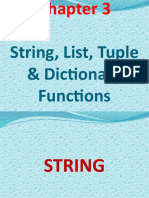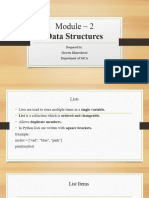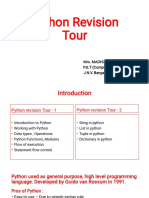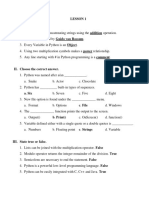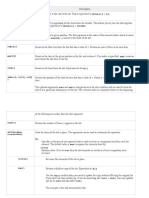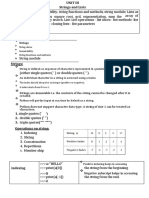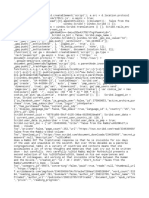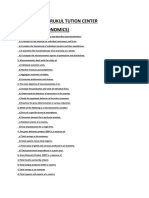0% found this document useful (0 votes)
7 views62 pagesCh. 2 Python Revision Tour II
The document provides a comprehensive overview of string and list operations in Python, including string concatenation, replication, membership, and various built-in functions like ord(), chr(), and len(). It also covers list creation, accessing elements, comparing lists, and manipulating lists through slicing, concatenation, and deletion. Additionally, it highlights the differences and similarities between strings and lists, emphasizing their mutability and storage characteristics.
Uploaded by
41 Ansh maurya 9ACopyright
© © All Rights Reserved
We take content rights seriously. If you suspect this is your content, claim it here.
Available Formats
Download as PDF, TXT or read online on Scribd
0% found this document useful (0 votes)
7 views62 pagesCh. 2 Python Revision Tour II
The document provides a comprehensive overview of string and list operations in Python, including string concatenation, replication, membership, and various built-in functions like ord(), chr(), and len(). It also covers list creation, accessing elements, comparing lists, and manipulating lists through slicing, concatenation, and deletion. Additionally, it highlights the differences and similarities between strings and lists, emphasizing their mutability and storage characteristics.
Uploaded by
41 Ansh maurya 9ACopyright
© © All Rights Reserved
We take content rights seriously. If you suspect this is your content, claim it here.
Available Formats
Download as PDF, TXT or read online on Scribd
/ 62







